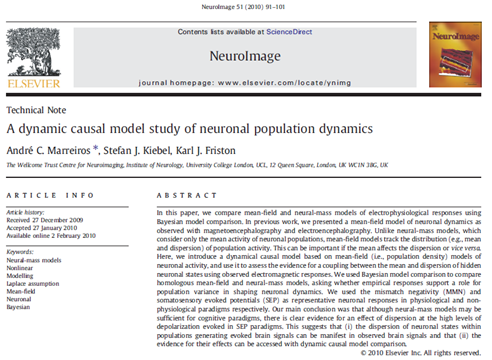I have been sent a PDF of which I reproduce the front matter. Is it “Open Access”? Note that if I get the answer wrong I might get lawyers’ letters accusing me of copyright theft, breach of contract, etc. Note that I personally an unable to answer some of these questions authoritatively (To avoid typing here is the metadata:
NeuroImage Volume 51 Issue 1 15 May 2010, Pages 91–101
There are some subsidiary questions:
- Can I post it on the web? For commercial use? For any use?
- Is it Green? Or Gold? BOAI compliant? Or something else? How did you tell?
- Is it gratis? Is it libre? If so what permissions have been relaxed?
- Can I send someone a copy? Anyone? Or just a non-commercial?
- Does its location affect whether it is Open Access?
- Has someone paid for Open Access? Would their funders be satisfied?

What I was able to find out in a few minutes is:
The article is in the PubMedCentral Open Access subset. The PMC xml file provides a link to the license terms: http://www.elsevier.com/wps/find/authorsview.authors/supplementalterms – this page states the terms fairly clearly (compared to so many other licenses I’ve see). The license is not a standard license. It has non-commercial clauses. It is Gold in the sense that someone paid extra to get this to be “OA”, but it is not BOAI compliant and hence not what I would call Gold OA. I cannot say if their funders would be satisfied – you’d have to ask the funders. It is gratis as I and anyone can download it for free, but not libre as I cannot use it for all lawful purposes due to non-commercial clauses. You can pass on a copy to anyone you like, provided that you are not doing so for a fee or show advertisement.
But most important of all, I found out that PubMedCentral is largely useless for text mining. Not only do they forbid bulk download of the vast majority of the content. Even the Open Access subset is difficult to use – to quote the PMC web page: “Please refer to the license statement in each article for specific terms of use. The license terms are not identical for all articles in this subset.” That would be the non-computer-readable licenses.
Thanks,
This is a wonderful answer. I won’t comment at this stage because I’d like other views.
I’ll note that you had to go to Eu/PMC to answer the question.
From the image you linked, the only information about copyright I can see is the “(C) 2010 Elsevier Inc. All rights reserved.” This seems to imply that the article is not open access. If there is no way to tell from the PDF file if it is copyright or not, how are you supposed to know if you are allowed to redistribute the file?
However, given that the paper is from the Welcome Trust Centre for Neuroimaging, I suspect it might be open access given the trust’s stance on the issue.
>>From the image you linked, the only information about copyright I can see is the “(C) 2010 Elsevier Inc. All rights reserved.” This seems to imply that the article is not open access.
>>If there is no way to tell from the PDF file if it is copyright or not, how are you supposed to know if you are allowed to redistribute the file?
This is the point of the question. Many people will assume they aren’t allowed to redistribute it.
>>However, given that the paper is from the Welcome Trust Centre for Neuroimaging, I suspect it might be open access given the trust’s stance on the issue.
Excellent deduction Watson. Logical, but not necessarily correct in fact.
I await for suggestions.
Pingback: NIF Blog » Blog Archive » Are You Sure You Published An Open Access Article?